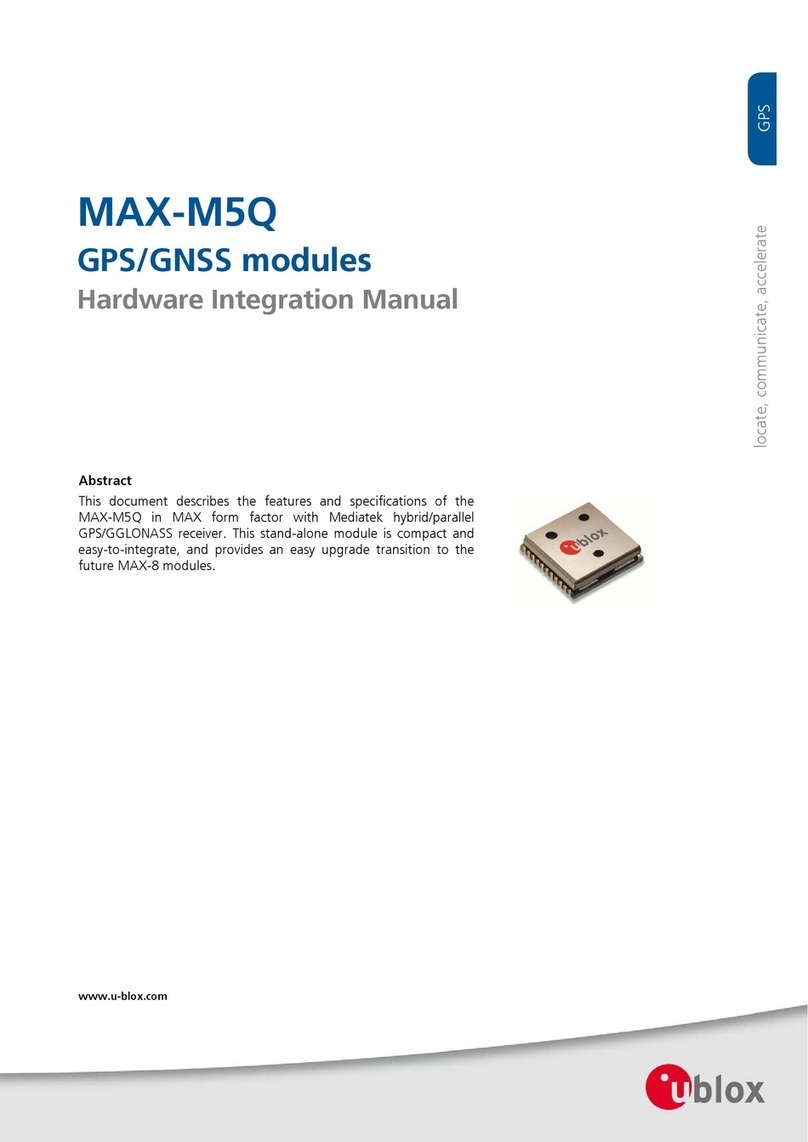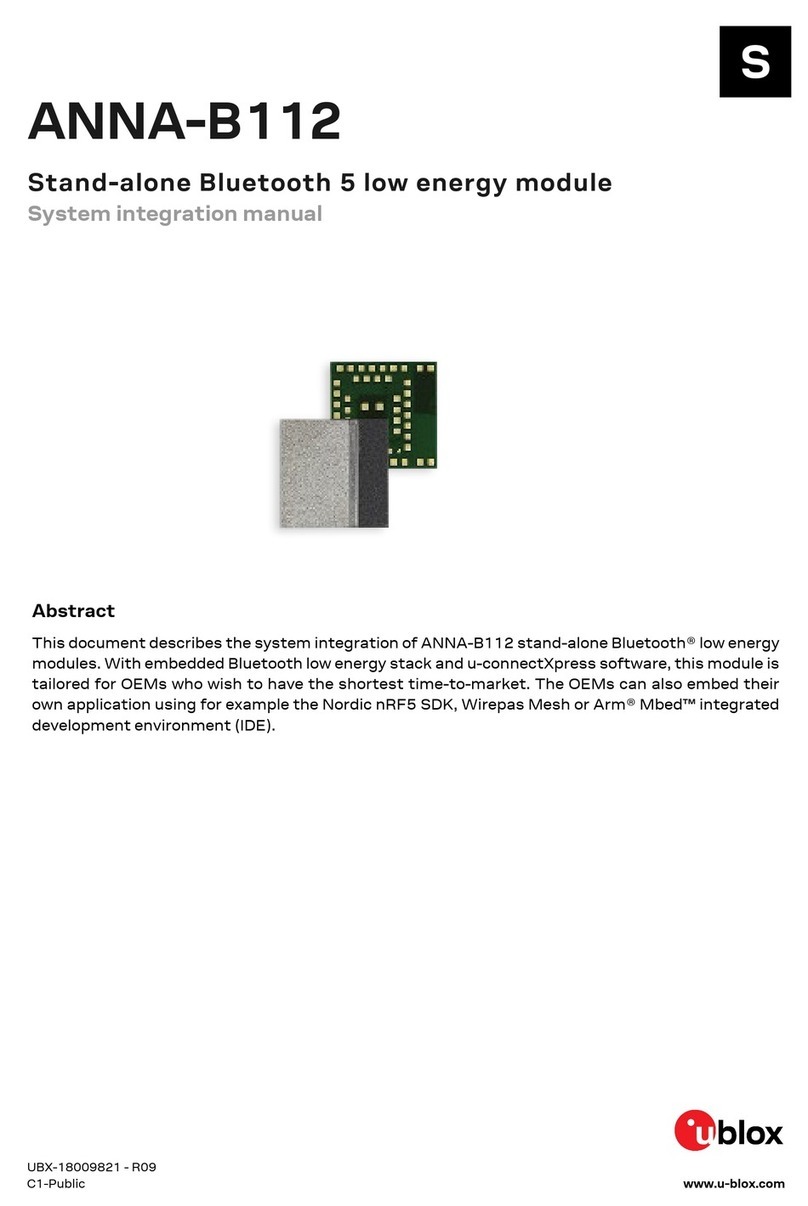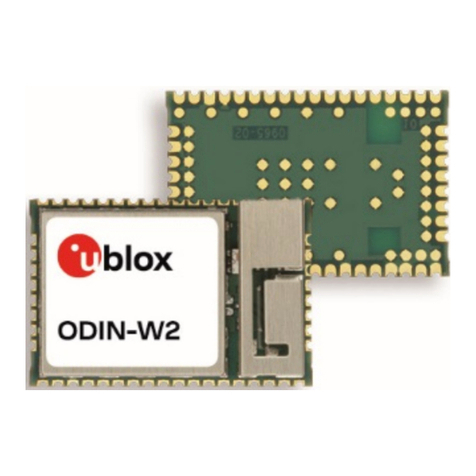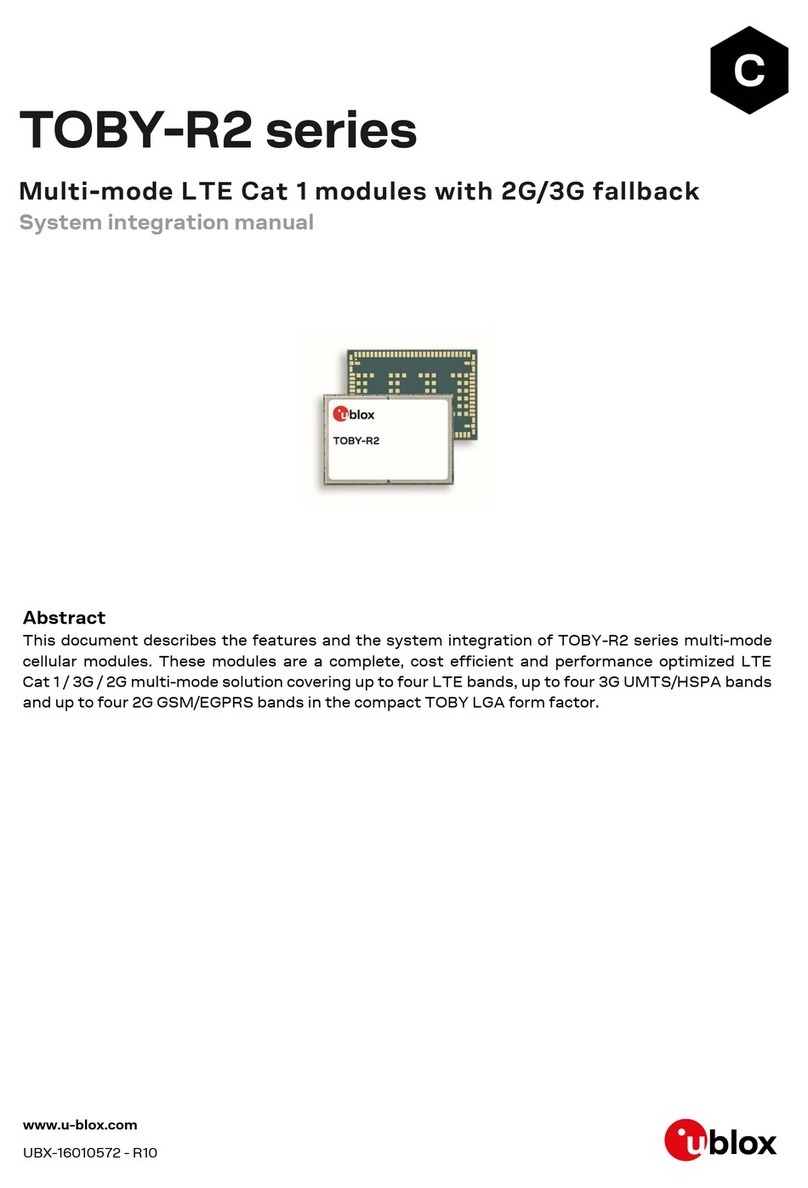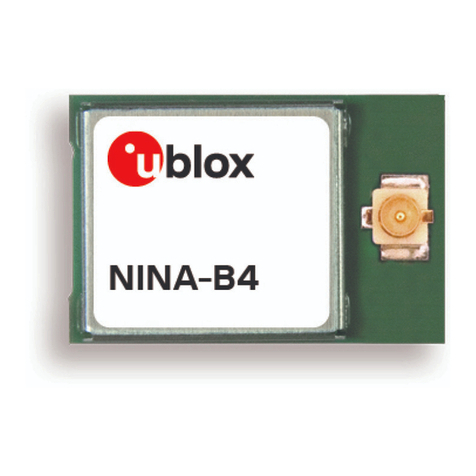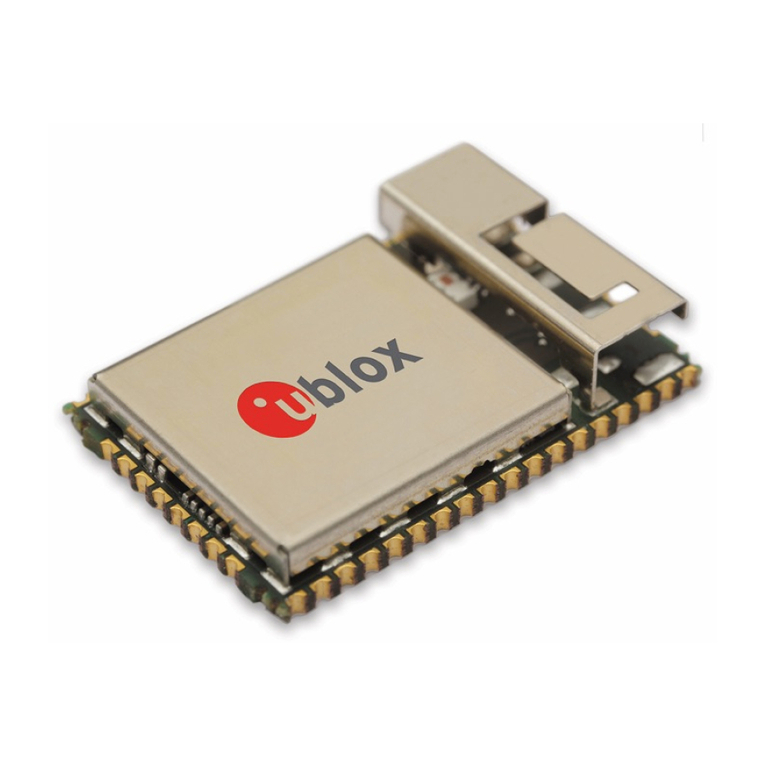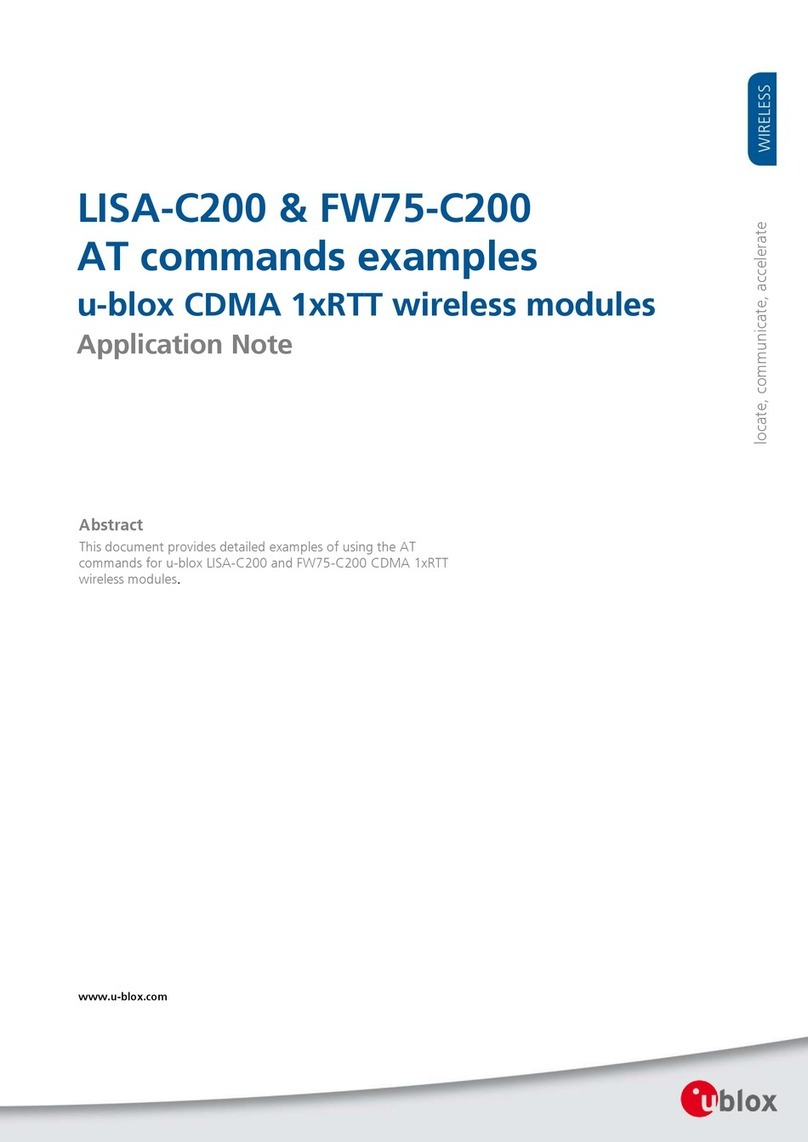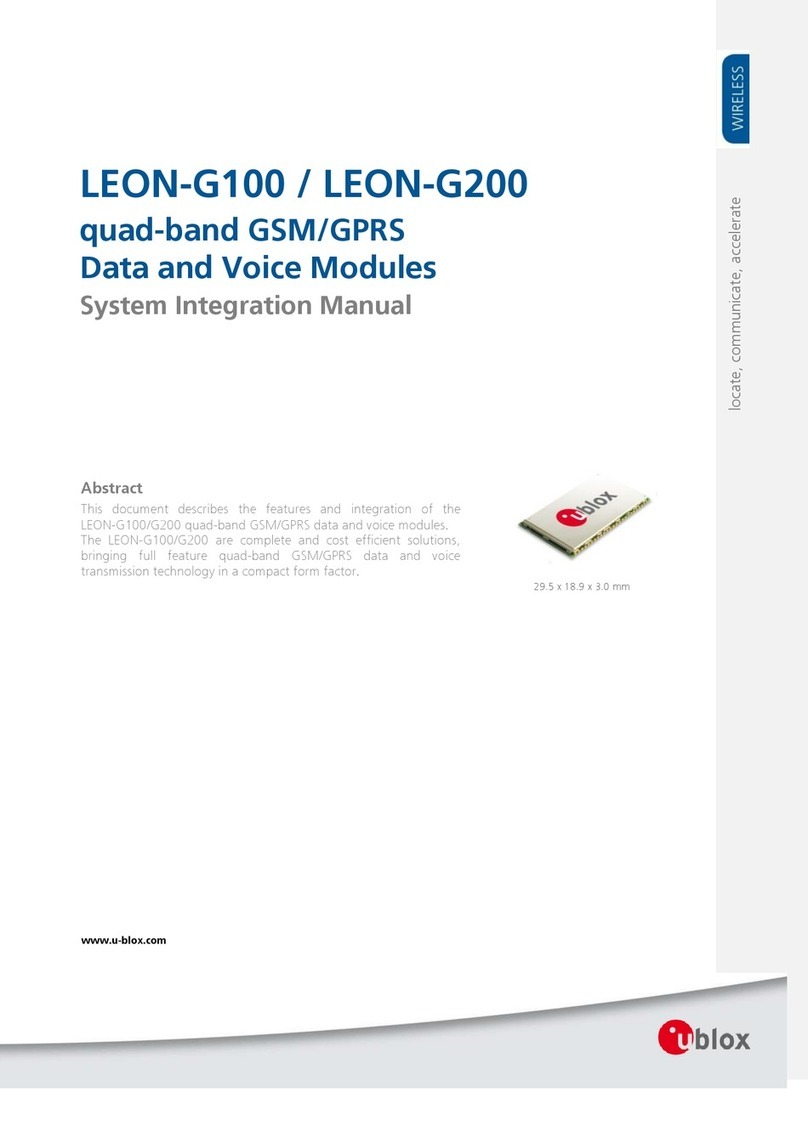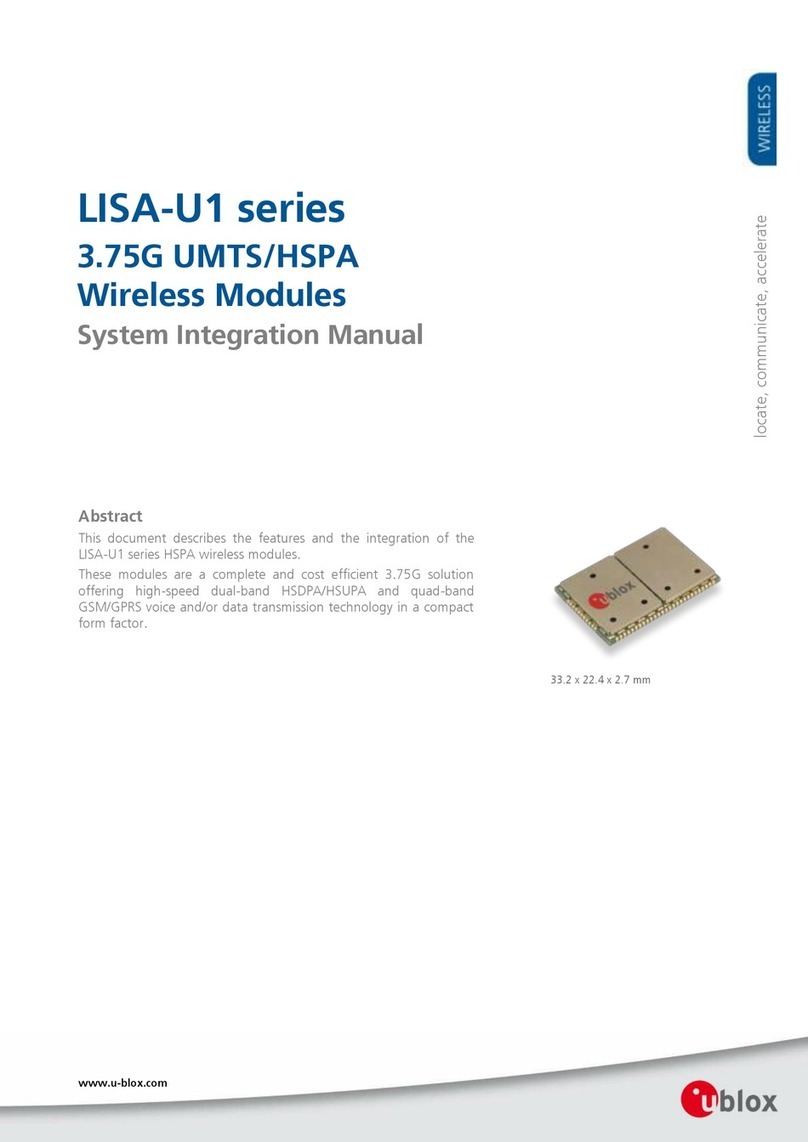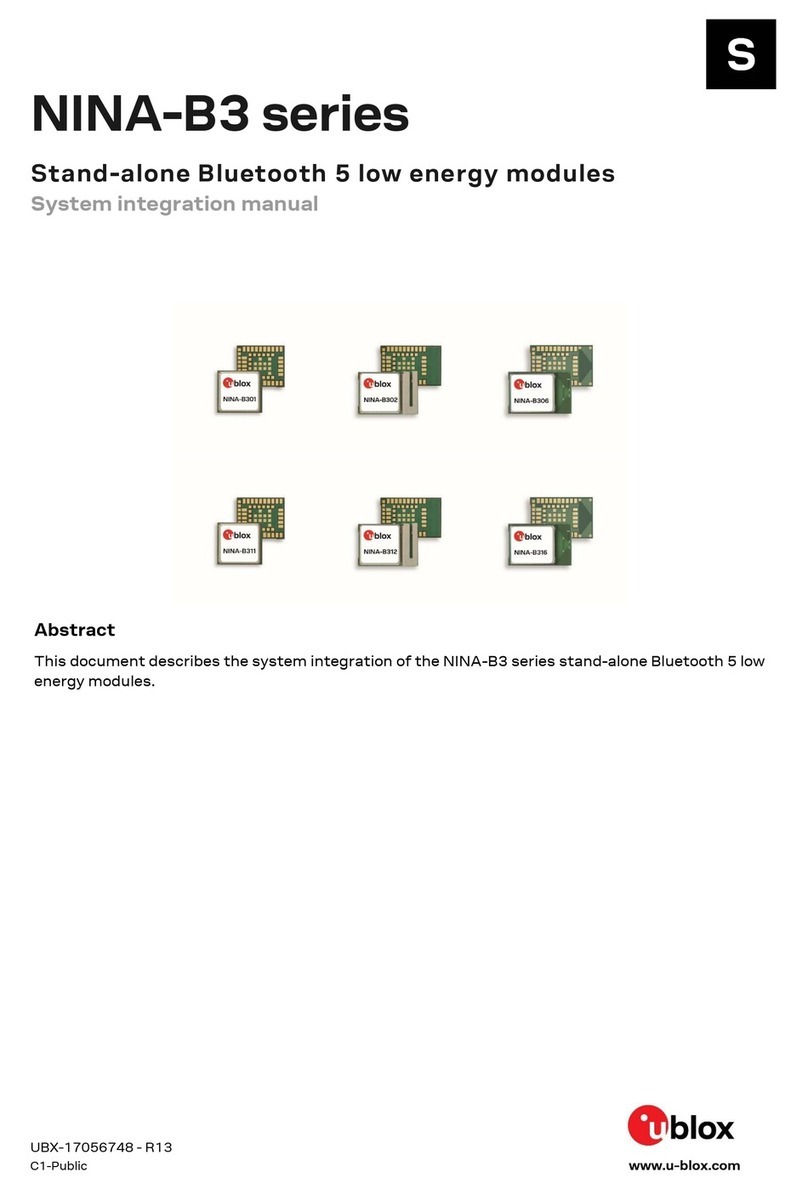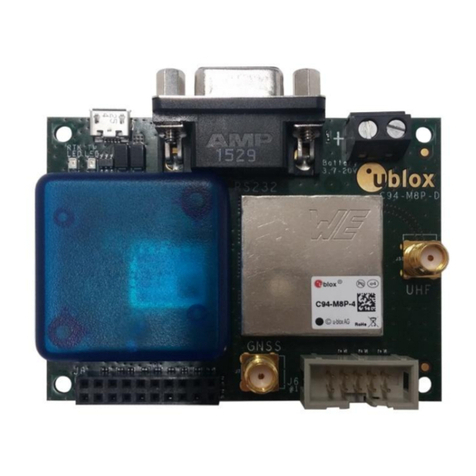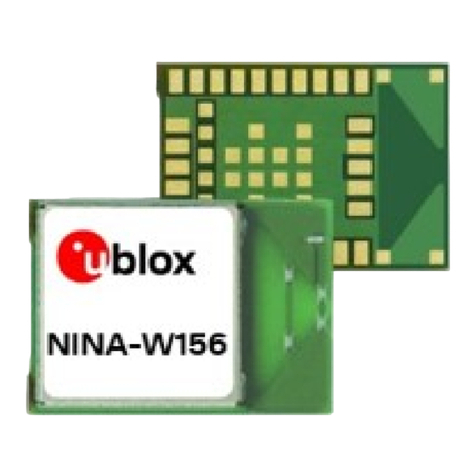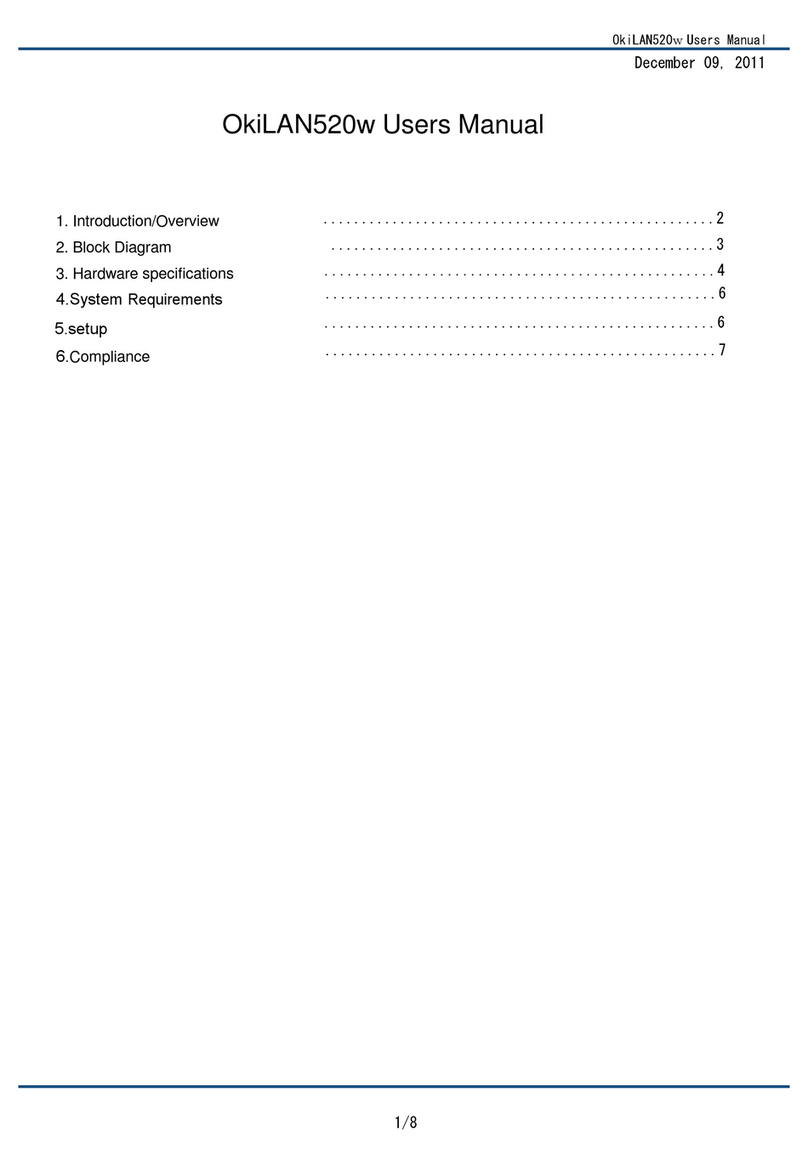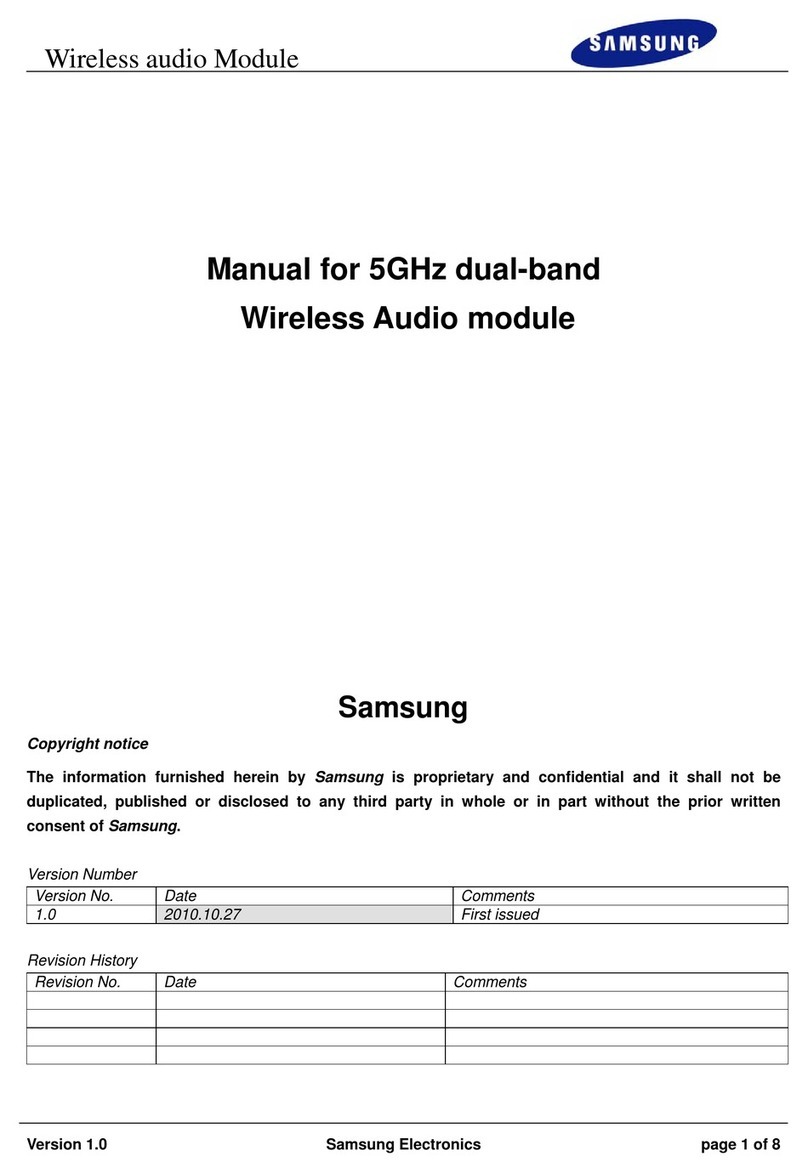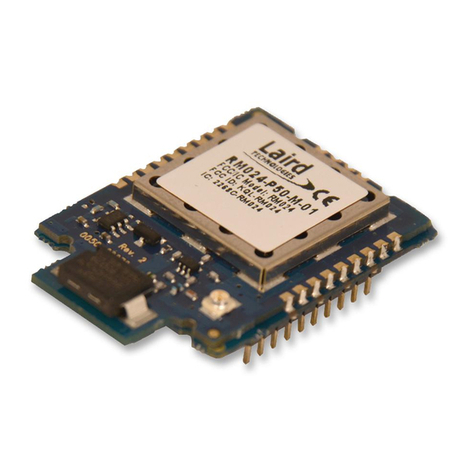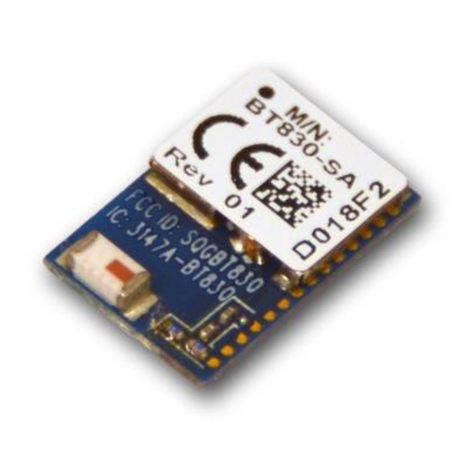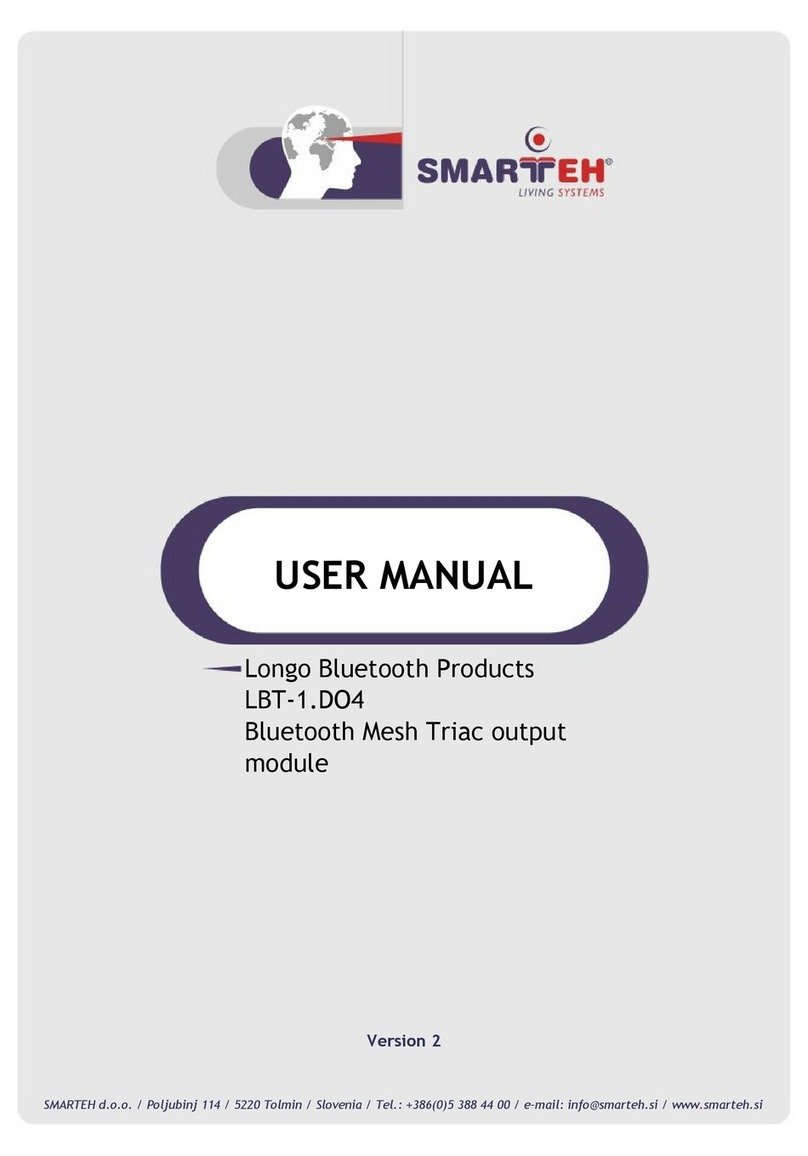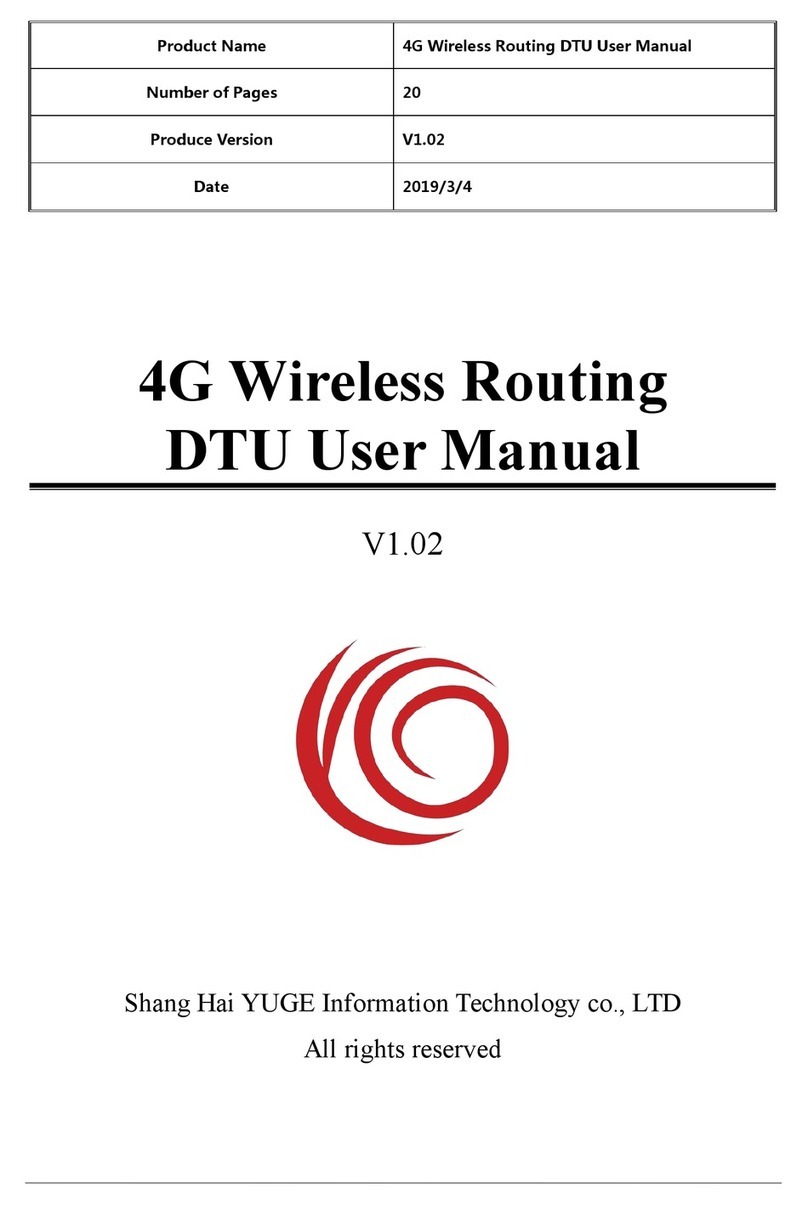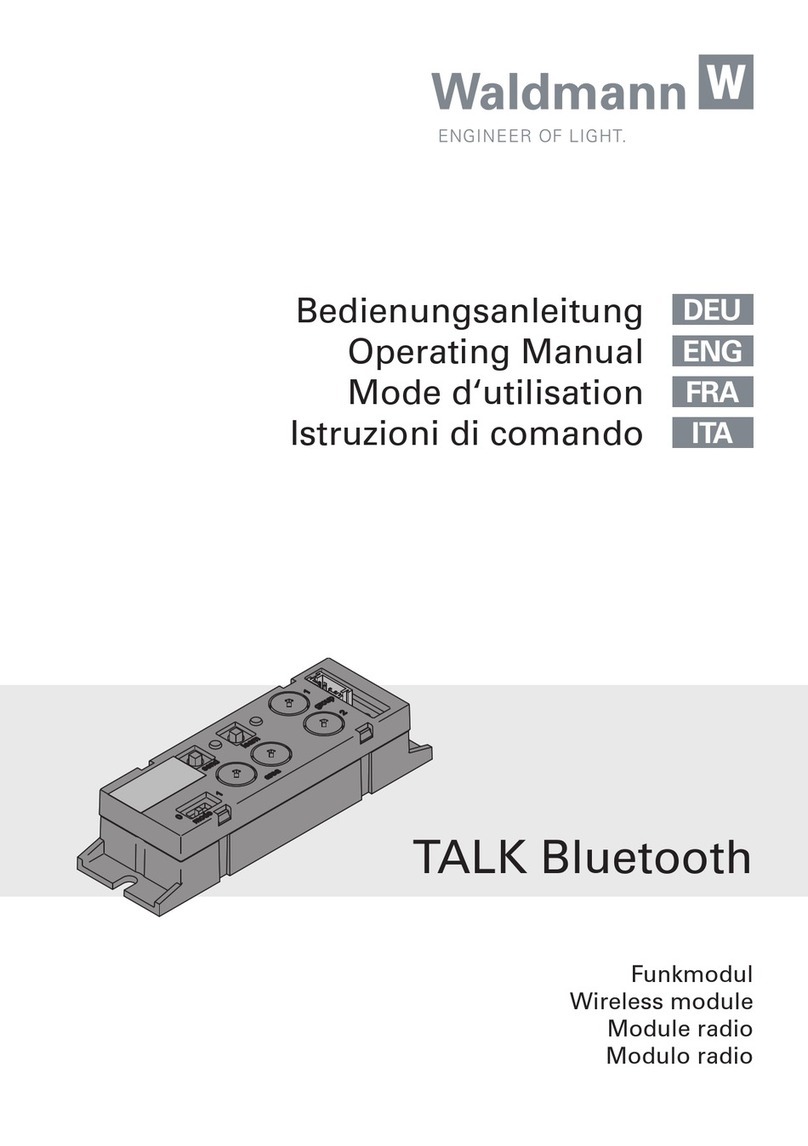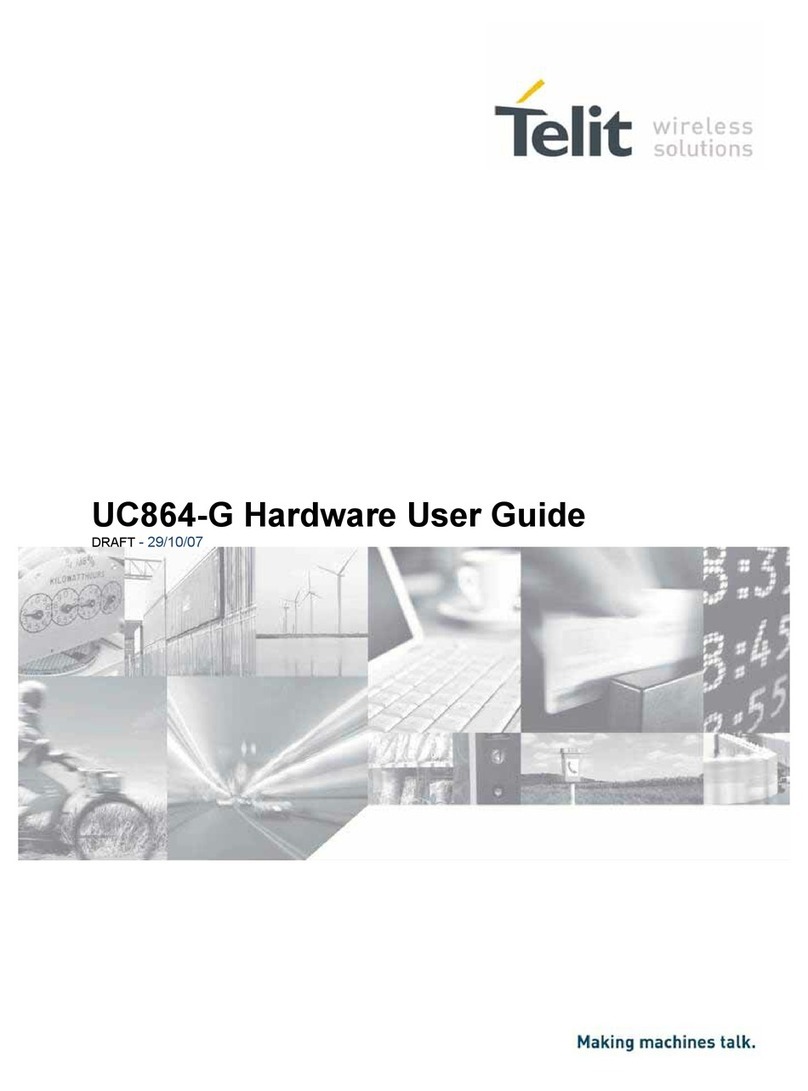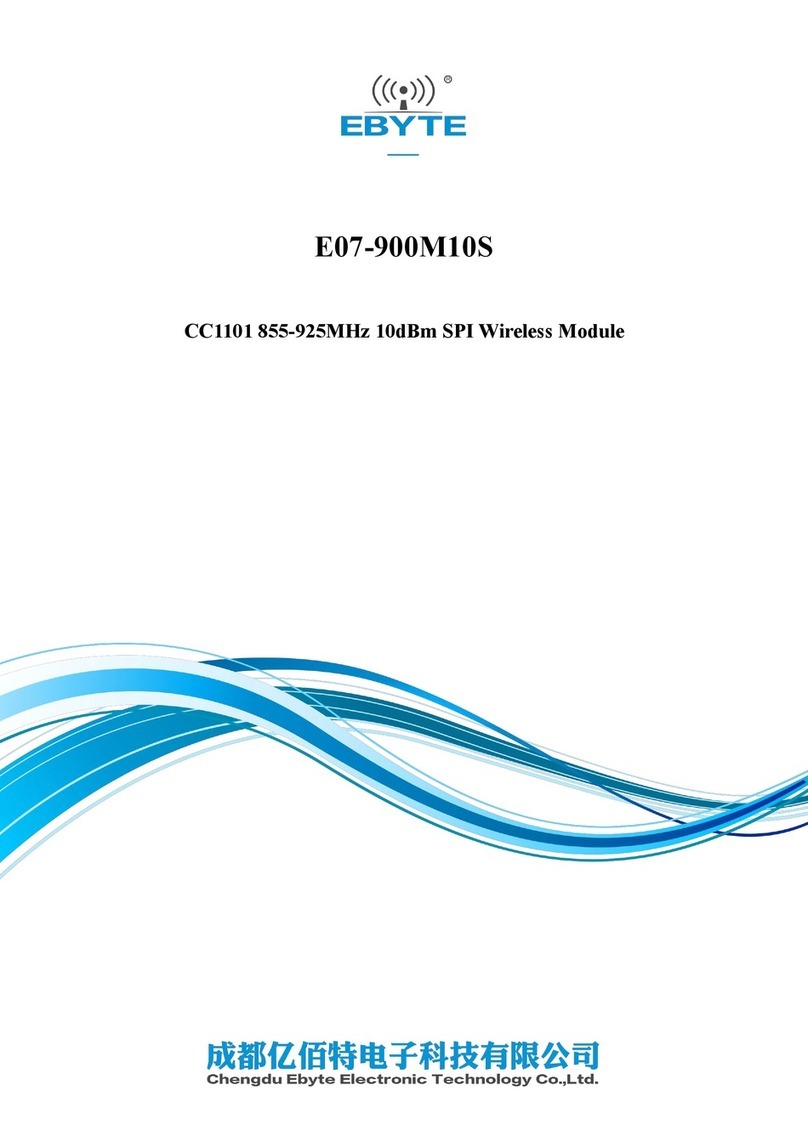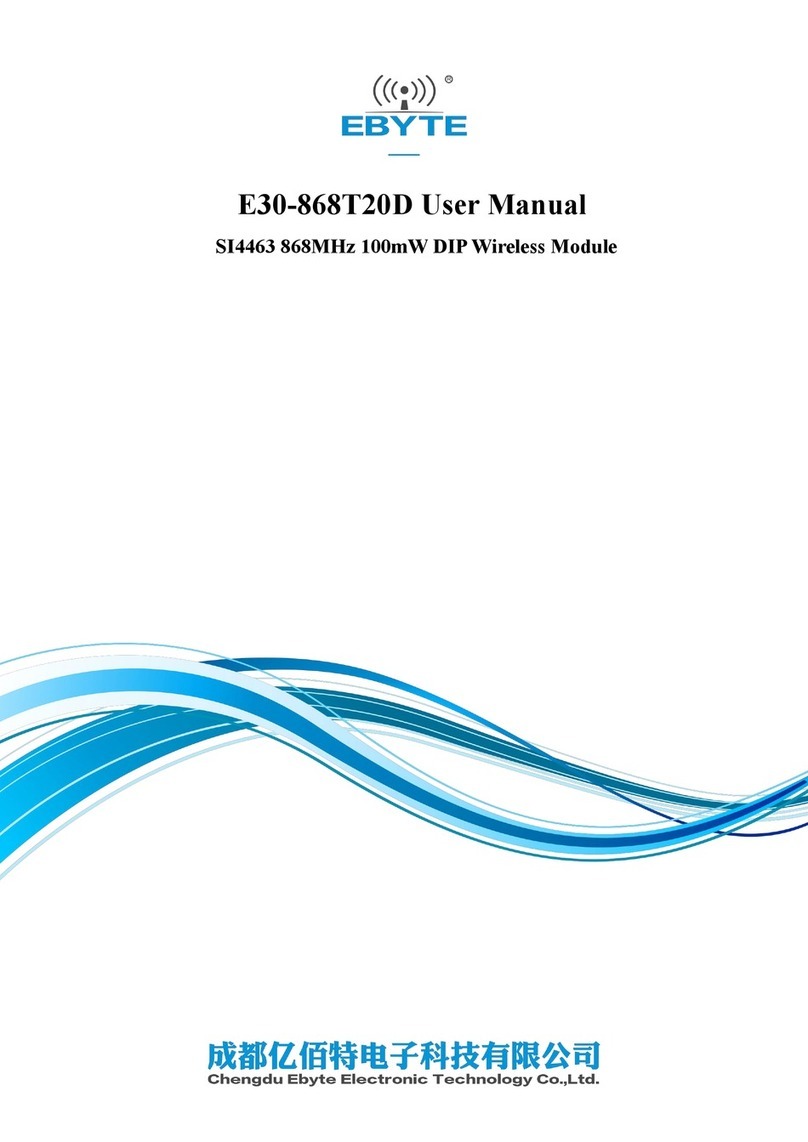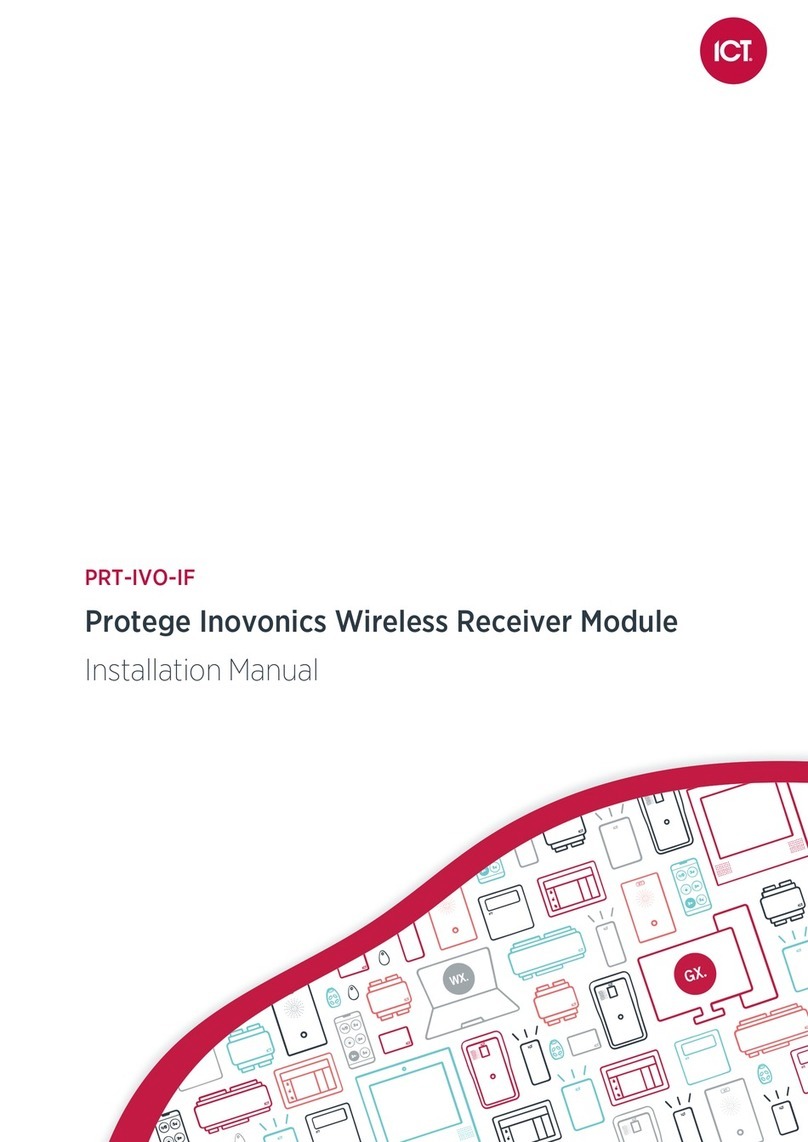NORA-W30 series - System integration manual
UBX-22021119 - R02 Contents Page 4 of 52
C1-Public
2.13No-connect pins (n/c)......................................................................................................................................17
2.14Ground (GND) pins............................................................................................................................................17
3Design-in..................................................................................................................................... 18
3.1 Overview ..............................................................................................................................................................18
3.2 Antenna interface ............................................................................................................................................18
3.2.1 RF transmission line design (NORA-W301)....................................................................................18
3.2.2 Antenna design (NORA-W301)...........................................................................................................20
3.2.3 On-board antenna design (NORA-W306) ........................................................................................23
3.3 Data communication interfaces ..................................................................................................................25
3.3.1 Asynchronous serial interface (UART) design................................................................................25
3.4 General high-speed layout guidelines ........................................................................................................25
3.4.1 Considerations for schematic design and PCB floor-planning..................................................25
3.4.2 Component placement ..........................................................................................................................25
3.4.3 Layout and manufacturing...................................................................................................................25
3.5 Module footprint and paste mask...............................................................................................................26
3.6 Thermal guidelines...........................................................................................................................................27
3.7 ESD guidelines...................................................................................................................................................27
3.8 Design-in checklists.........................................................................................................................................28
3.8.1 Schematic checklist................................................................................................................................28
3.8.2 Layout checklist.......................................................................................................................................28
4Open CPU software .................................................................................................................. 29
4.1 Wi-Fi MAC and Bluetooth device addresses and other production data ........................................29
4.2 Realtek SDK .......................................................................................................................................................29
4.2.1 FreeRTOS...................................................................................................................................................29
4.2.2 SDK setup ..................................................................................................................................................29
4.2.3 GCC setup ..................................................................................................................................................29
4.2.4 IAR Workbench setup.............................................................................................................................30
4.2.5 Board configuration................................................................................................................................31
5Handling and soldering ............................................................................................................ 32
5.1 ESD handling precautions .............................................................................................................................32
5.2 Packaging, shipping, storage, and moisture preconditioning ............................................................32
5.3 Reflow soldering process ...............................................................................................................................33
5.3.1 Cleaning......................................................................................................................................................34
5.3.2 Other notes................................................................................................................................................34
6Regulatory compliance ............................................................................................................ 35
6.1 General requirements .....................................................................................................................................35
6.2 FCC/ISED End-product regulatory compliance (pending)....................................................................35
6.2.1 Referring to the u-blox FCC/ISED certification ID..........................................................................36
6.2.2 Obtaining own FCC/ISED certification ID .........................................................................................36
6.2.3 Antenna requirements...........................................................................................................................37
6.2.4 Software configuration and control...................................................................................................37
6.2.5 Operating frequencies ...........................................................................................................................38
